You're on the list
By signing up, you agree to receive email marketing.
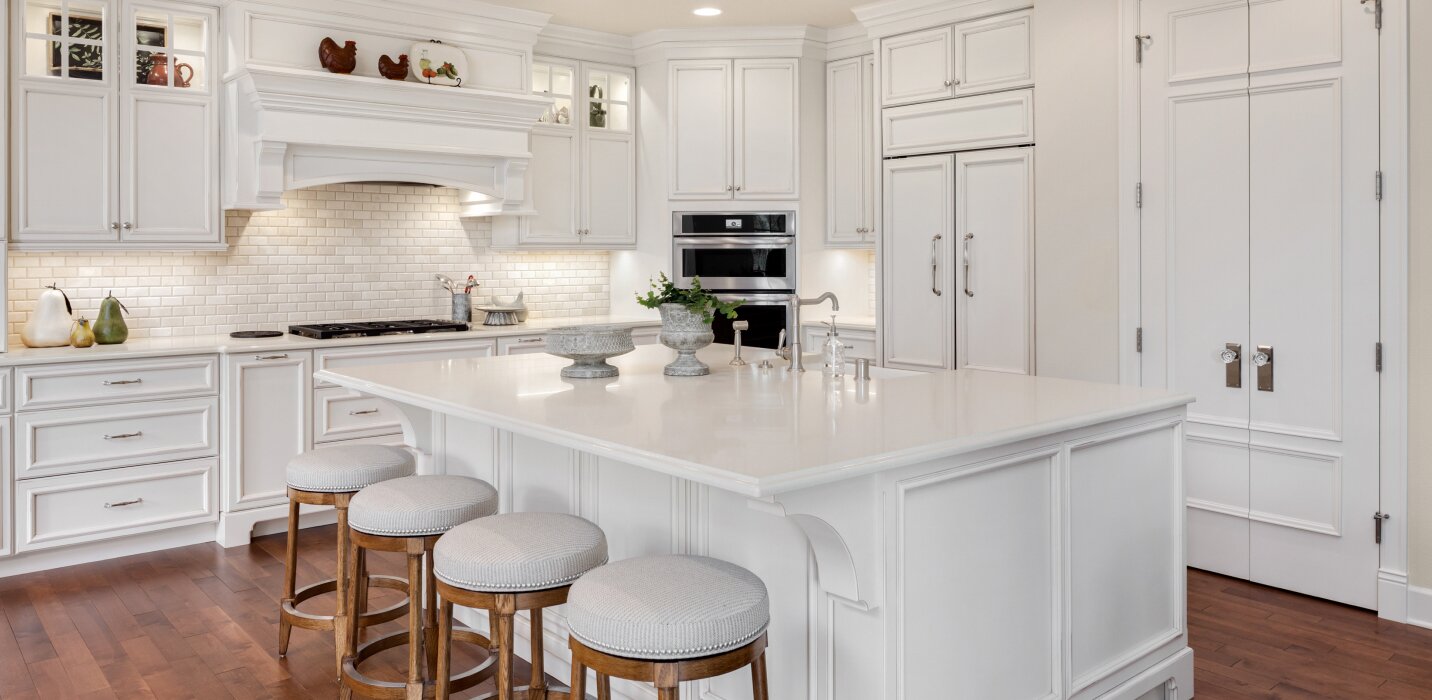
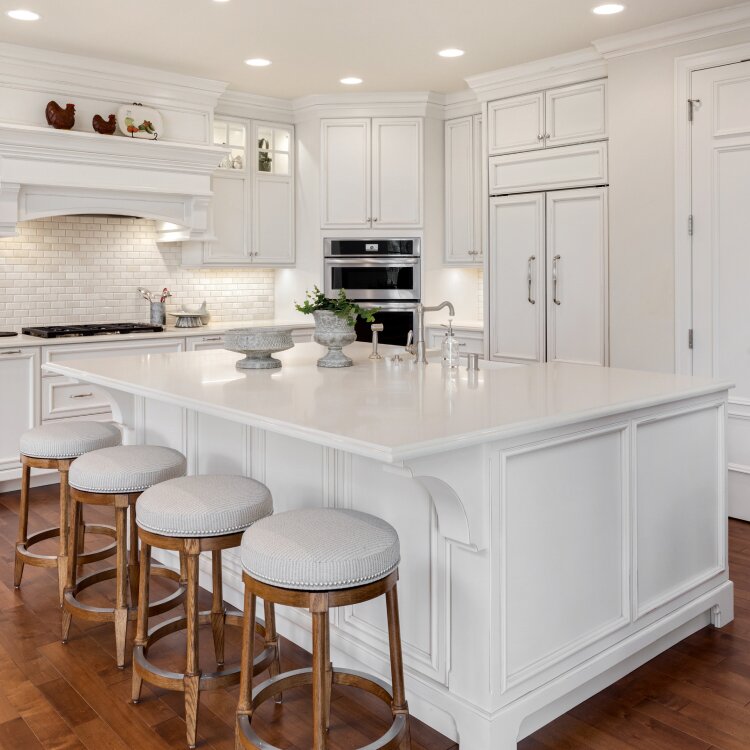
Deciding between decorating your home in a modern or traditional style can often feel impossible. After all, they couldn’t be more different. If you’re having trouble weighing the pros and cons of edgy and sleek vs. charming and ornate, let us introduce you to transitional style. This hybrid aesthetic is a harmonious balance of both modern and traditional style, often exuding the sophisticated appeal of modern style without losing the warmth, comfort, and character of traditional style. If you’re ready to commit to a transitional style, here are some easy tips for decorating your kitchen, dining room, bedroom, and bathroom in this blended look.
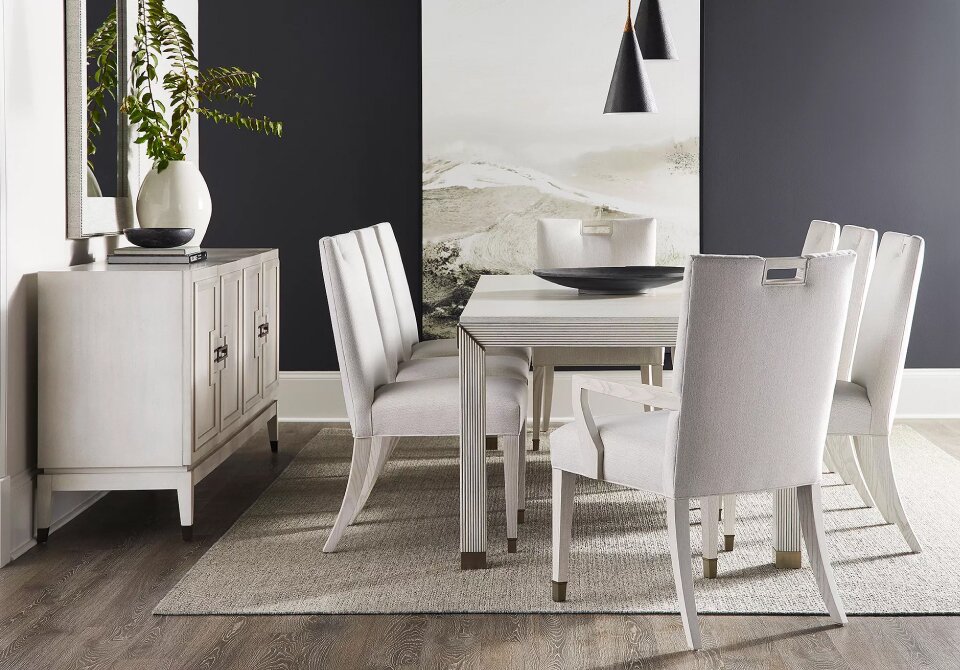
Bloomingdale's
Set the tone of your transitional kitchen and dining room by adding a blend of modern and traditional furniture as its foundation — namely dining chairs, dining tables, kitchen islands, and bar stools. To ace the balance, ditch the convenience of dining sets so you can mix and match the chairs and tables as you wish. For example, if you choose classic upholstered chairs, pair it with a curvy dining table with chrome legs. Conversely, if you choose a timeless wooden dining table, spring for more modern chairs with interesting silhouettes.
Pro tip: If you’re not sure how much of your room should be dedicated to modern vs. traditional, follow the 60:40 rule. This golden ratio can help you find an artful balance, whether you go 60 modern and 40 traditional or vice versa.
Whereas your larger kitchen and dining furniture can lean modern or traditional, we highly recommend sticking with modern style when choosing your fixtures. Ultra-modern lighting is often the focal point for a transitional kitchen or dining room, whether that’s a geometric chandelier or string of pendants over the island. A more subtle but equally important design element is your faucets and cabinet pulls. Swap them out with contemporary metal — preferably a tone that’s found in other elements in your kitchen and dining room — that looks sleek and is often easier to clean.
A transitional style leans heavily on a clean and pared down aesthetic, which can easily be mimicked in your tablescape. Instead of a large eye-catching centerpiece, consider some subtle earthenware pieces that create an air of quiet elegance. Let natural textures and materials take center stage, instead of bringing in highly decorative or brightly colored tableware. Ceramic and terracotta pieces, linen napkins, and brass accents are common elements of a transitional table setting.
As a designated place for gathering, hosting, and eating, our kitchens and dining rooms are bound to get a bit messy. To keep your transitional home looking serene and minimalist, invest in a sideboard or buffet. This large closed-storage furniture can help you keep all your clutter out of sight, whether that’s glasses and bottles for your bar, extra plates, tablecloths, or seasonal decorations.
Instead of a gallery wall featuring an array of smaller frames, make one big and bold statement in your transitional space. This piece will singlehandedly add much-needed depth and texture to your pared down setup without making things look overcrowded or cluttered. Consider a striking area rug for the dining room or large contemporary painting hung on the wall for your guests to admire over dinner and drinks.
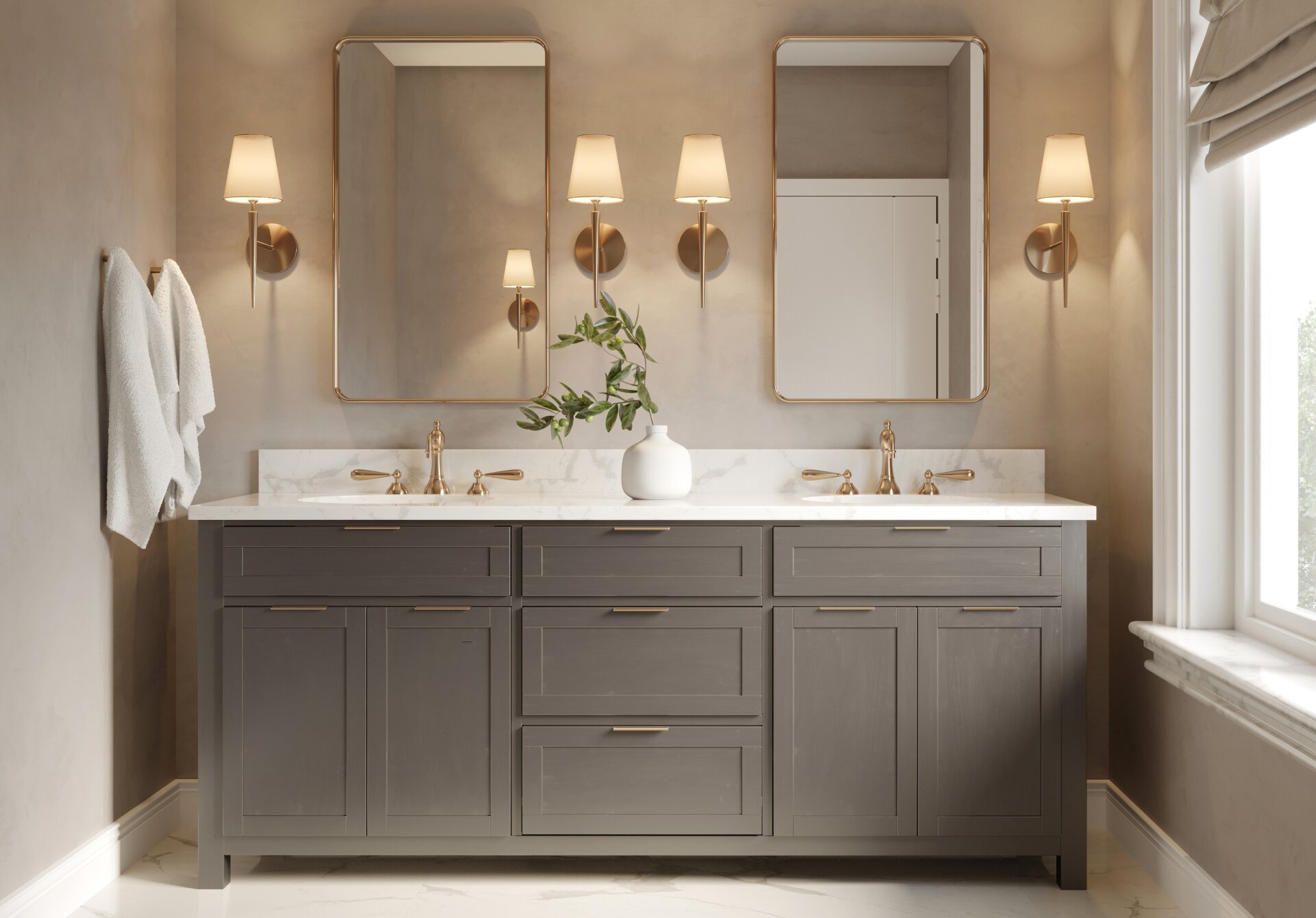
Retro bathrooms tend to be full of curvy lines whereas contemporary ones are full of crisp edges. For a transitional bathroom, it’s key to find a balance of both. If a freestanding claw foot tub is the star of your bathroom, make sure to pair it with sleek and modern cabinetry that really lets the sculptural silhouette and ornate details shine. If your bathroom is fitted with tons of modern amenities and fixtures, add a bit of soft traditional charm with natural wood elements like floating shelves made of weathered wood or a vintage oak cabinet.
In a sea of tile and grout, things can get bland pretty fast. Add a bit of traditional elegance and architectural flair into your bathroom with some visual interest on the walls. We love the look of paneling or shiplap — seen often in romantic and classic styles like cottage or farmhouse — in a transitional bathroom to counterbalance the texture-less look of sleek appliances and fixtures. If you’re looking for a simpler DIY solution, you can add patterned wallpaper to an accent wall for a touch of feminine warmth that’s easier to apply and remove.
When you have two opposing styles that need to blend together seamlessly, consider incorporating a consistent visual element throughout your pieces. The easiest way to do this is to stick to a unified style for your hardware and fixtures. If you choose to go the modern route, get knobs, pulls, towel rack, and lighting in the same chrome or metal finish. For a traditional look, a popular choice is vintage brassware that adds more warmth and artisanal flavor to your bathroom.
Because transitional-style bathrooms don’t rely on pops of bright colors or patterns, we need to add contrast for some visual interest. We are partial to the look of matte black metal hardware against light-colored marble and tile that instantly creates a sleek, refined, and decidedly modern look. Or you can add natural materials for much-needed texture in a room that’s made almost entirely of smooth and glossy surfaces. Style your transitional bathroom with organic accents made of stone, wood, brass, terracotta, and plants that thrive in a humid environment.
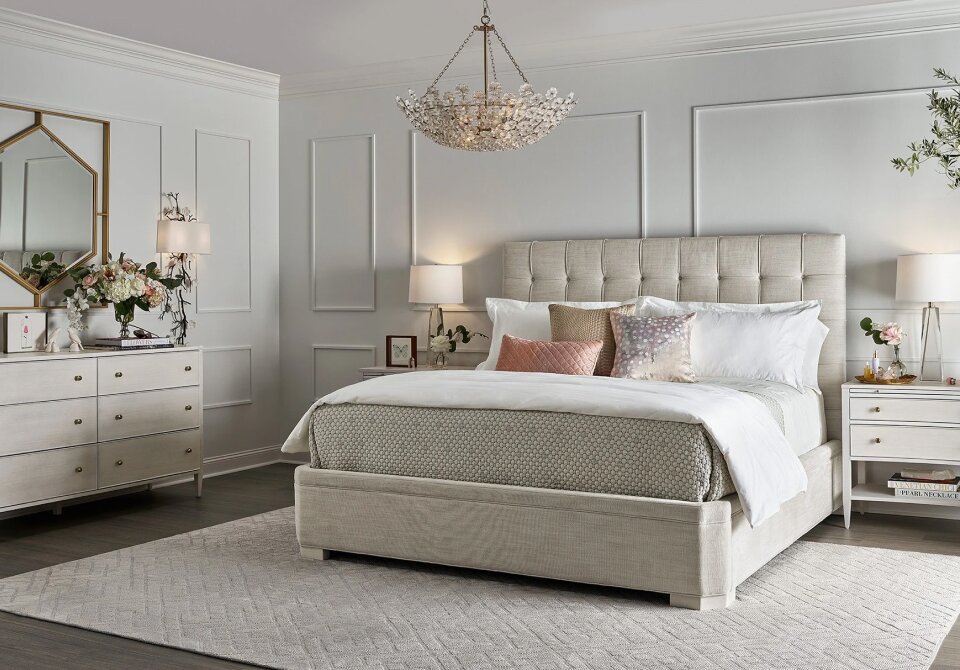
Mathis Home
If you’re looking for visual inspiration for your transitional bedroom, look no further than a room at a luxury resort. Take a page from its nature-inspired color scheme featuring neutral cream, taupe, and tan. This will emulate the expensive and elegant look in your home, while helping to establish an atmosphere of calming rest and relaxation. And to avoid a flattening effect of too much beige hues, add different shades to create depth and interest, like dark brown or black accents.
To add character, charm, and the highly-decorative details of traditional style — without losing the overall clean aesthetic of modern style — we recommend adding or playing up any embellishments found on the walls of the room. Think molding, paneling, and French doors that can infuse an air of classic design. These subtle touches can set the tone of traditional beauty without adding too many furniture or accessories that can clutter your transitional bedroom.
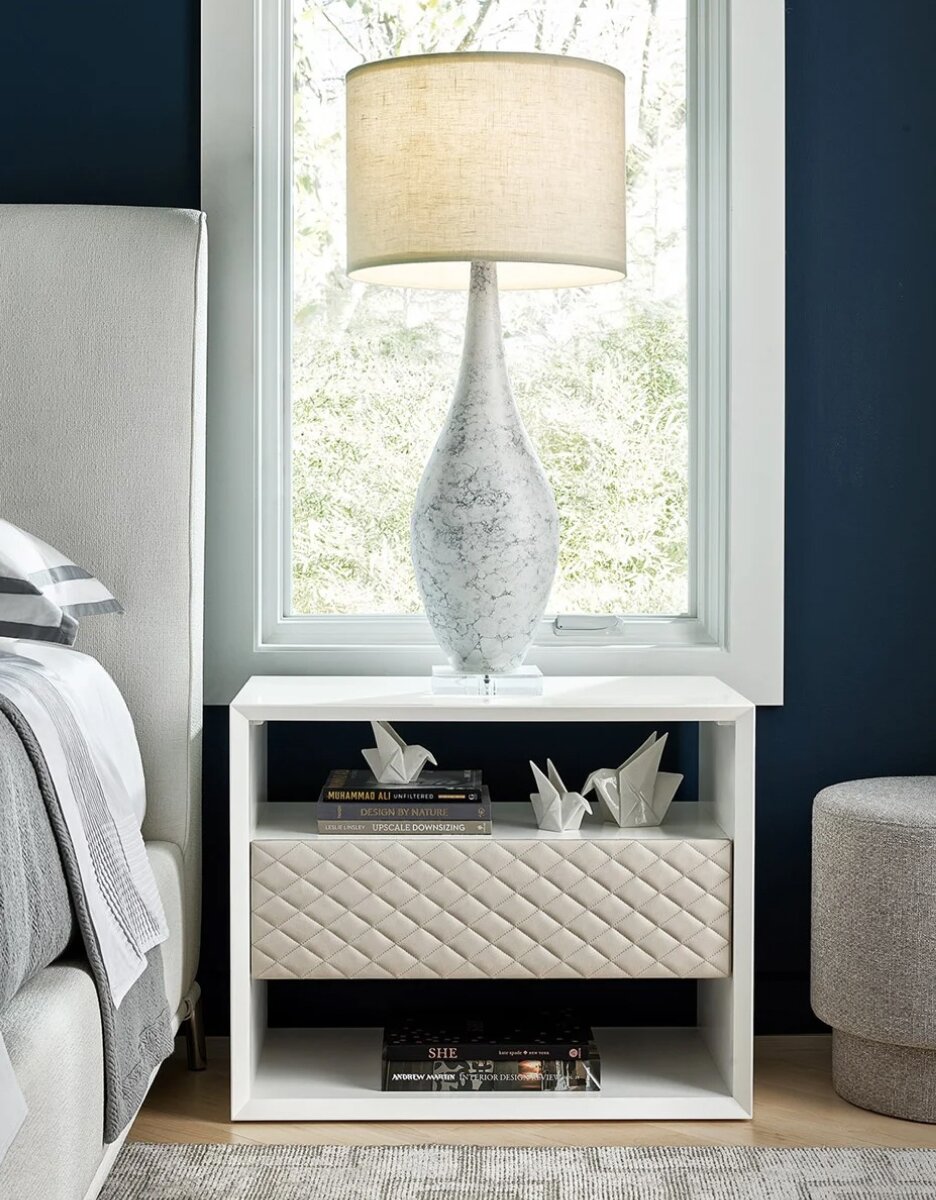
Universal Furniture
The number one rule for creating a cozy and inviting bed is to layer up. Create a sense of abundance and plushness with a combination of standard and European shams, throw blankets in neutral tones, and decorative pillows that add even more comfort. But be wary of adding too many patterns that can make things look too busy for a transitional bedroom. Instead, scratch your itch for visual interest with natural textures like linen and wool as well as trimmings like tassels, tufts, and knots.
Bring one of the central tenets of transitional style — blending crisp straight lines with organic curves — to your bedroom. All you have to do is pair a traditional headboard with some modern nightstands. You can create romance and drama with a tall and regal headboard, or even go all out with a four-poster bed or canopy bed frame. Then tone it down with a dose of minimalism by adding a pair of angular nightstands on either side of the bed.
We consider this a rule of thumb that should be followed in every bedroom, so it unsurprisingly applies for transitional bedrooms too. Make sure your transitional bedroom layers the lighting — meaning you should introduce multiple sources of soft and ambient light that illuminate your room at different heights. This creates a cozy and warm approach, instead of one severe overhead light that can make things look a bit harsh and sterile. Consider mixing and matching table lamps, floor lamps, and a dim pendant or chandelier to complete the effect.
Explore More
You're on the list
By signing up, you agree to receive email marketing.